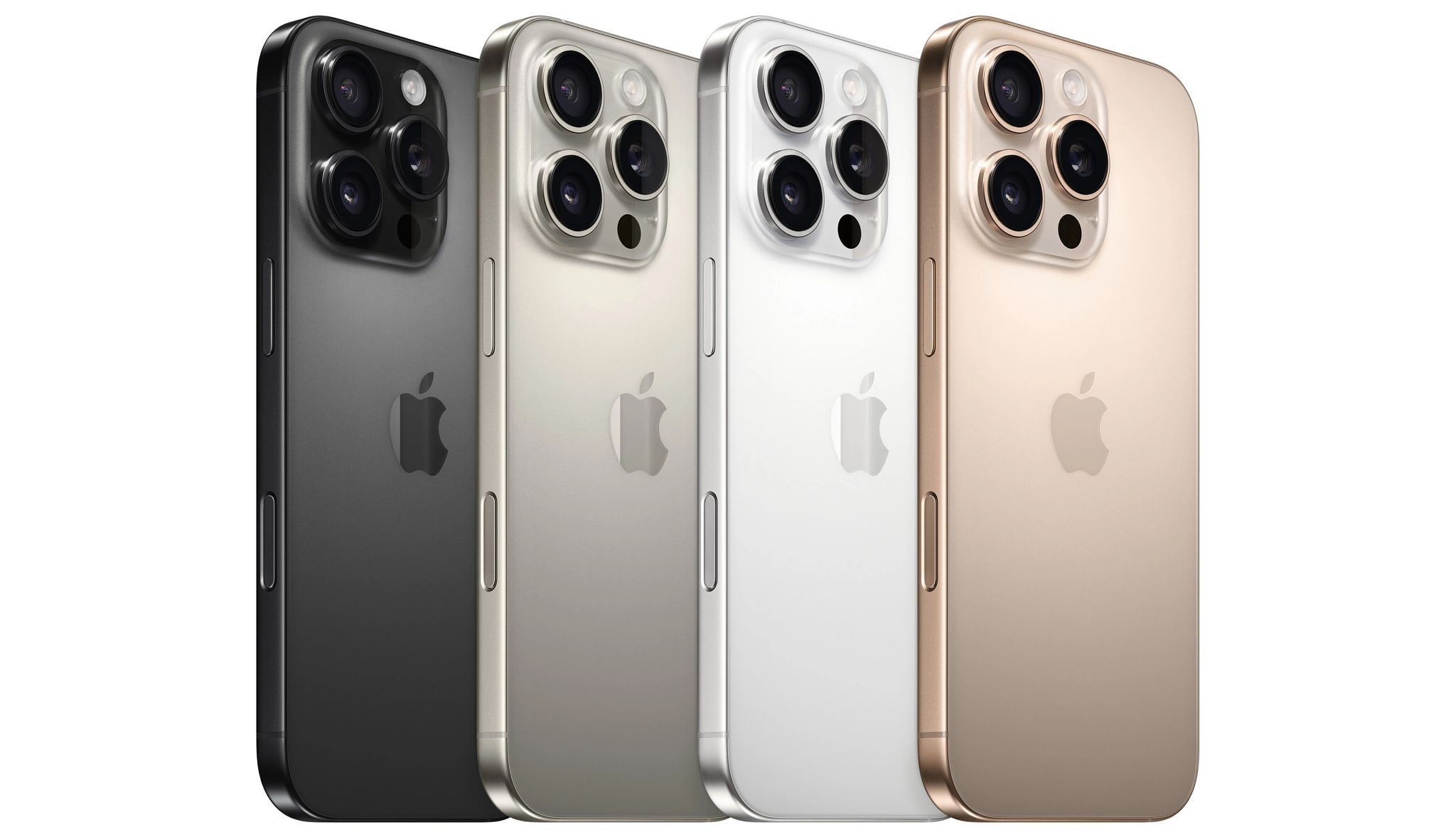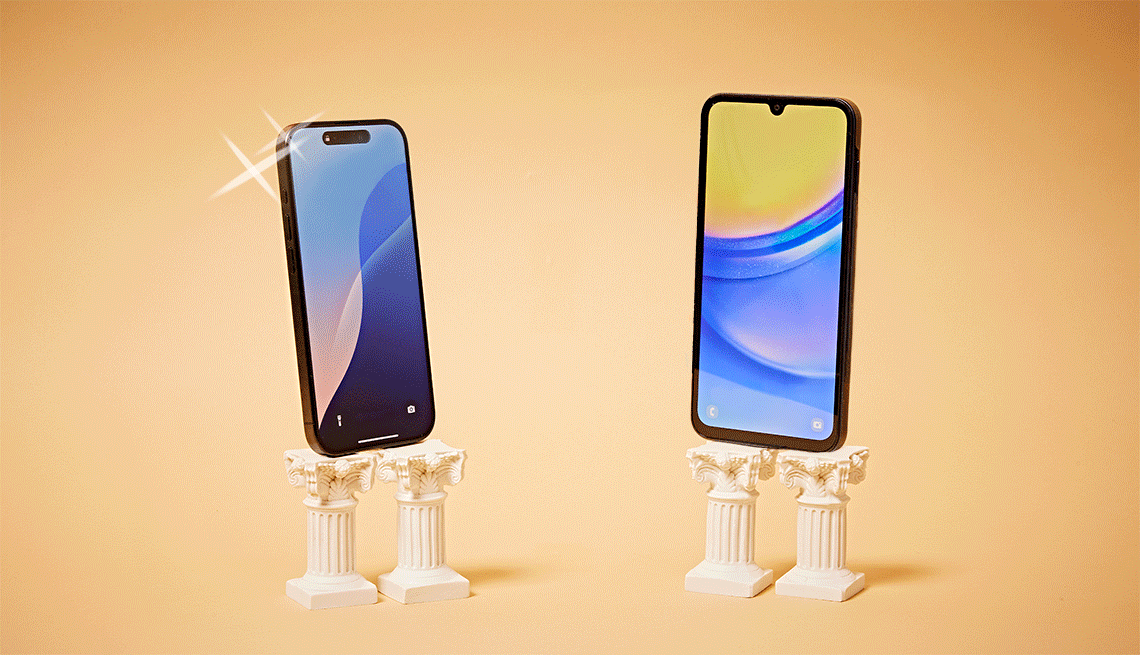
A lineup of Apple’s iPhone 16 Pro.
Apple

When the time comes to replace your smartphone, which model should you choose? The least expensive? The one with the best camera? The same brand you’ve always used?
Nearly 9 of 10 older Americans own a smartphone, according to a recent AARP survey. And even if you shield yours from the dings of everyday use with a hard plastic case and screen protector, you will have to replace it in about five or six years when its manufacturer stops issuing compatible operating system updates.
These days, mass-market smartphones are divided into two camps, those that run Apple’s iOS or Google’s Android operating system. Devices on both sides share many hardware and software similarities, and switching between them is not that tough.
But each has a different look, feel and feature set. Price, screen size and weight also can vary greatly.
Choice is good but can be overwhelming. Here is a closer look at each platform to help you make the best decision for your needs.
iPhone, which runs Apple’s iOS operating system, is arguably the easiest to use — not only because its design is intuitive but also because other Apple devices, such as Apple Watch and iPad, are meant to work with the phones.
“I think most aging adults will be better off with an iPhone,” says Patrick O’Rourke, devices managing editor at Pocket-lint. The technology publication focuses on smartphones and other portable devices. “The operating system is more straightforward. It’s leagues ahead of the average Android phone in being easy to use.”
The learning curve for an Android is steeper than for an iPhone, says Carolina Milanesi, president and principal analyst at Creative Strategies. Her market research firm is based in California’s Silicon Valley.

A lineup of Apple’s iPhone 16 Pro.
Apple
Too much of a good thing? Yet O’Rourke thinks iPhones are getting more complicated, which can be a problem for older adults who don’t need or want to use many of a phone’s features. So he believes Google’s latest Android phone, Pixel 9, is worth checking out.
“Its user interface is super clean, and whatever setting you’re looking for is exactly where you expect it to be,” he says.
If you’re looking at the least expensive, new, high-end smartphones — an Apple iPhone 16, Google Pixel 9 or Samsung Galaxy S24 with 128 gigabytes (GB) of storage — you’ll find nearly identical prices on manufacturers’ websites, $799 for the iPhone and Pixel, $799.99 for the Galaxy.
But here’s where having competition from several manufacturers helps consumers. Only Apple makes iPhones, but Google’s Android platform is open and freely distributed.
“Price is the only major downside with Apple’s iPhone,” O’Rourke says. “An Android device can be a great option for someone looking to save money, especially if they just need a basic phone.
“That said, Apple’s devices tend to last longer than the average Android device, so even a used iPhone from a few years ago is a viable option,” he says.
Low-end prices. Apple’s least expensive latest iPhone SE starts at $429 for the 64GB model. The iPhone 14 starts at $599. Both were released in 2022 and have 6.1-inch screens, measured on the diagonal like TVs.
Samsung’s Galaxy A Series smartphones are its most affordable. Its Galaxy A15 5G, which came to market in December 2023, costs $199.99 and comes with 128GB of storage. Motorola’s Moto G 5G with the same storage is the same price.
High-end devices. At the pinnacle of iPhone prices is the 16 Pro Max with a 6.9-inch display and a terabyte (TB) of internal storage for $1,599.
Premium Android phones can top that. Samsung’s flagship Galaxy S series starts at $699.99.
But the most expensive of its foldable and flippable Z series, the Galaxy Z Fold6, has a 7.6-inch screen and 1TB of storage for $2,259.99. The Google Pixel 9 Pro Fold has an 8-inch display unfolded and 512GB of storage for $1,919.